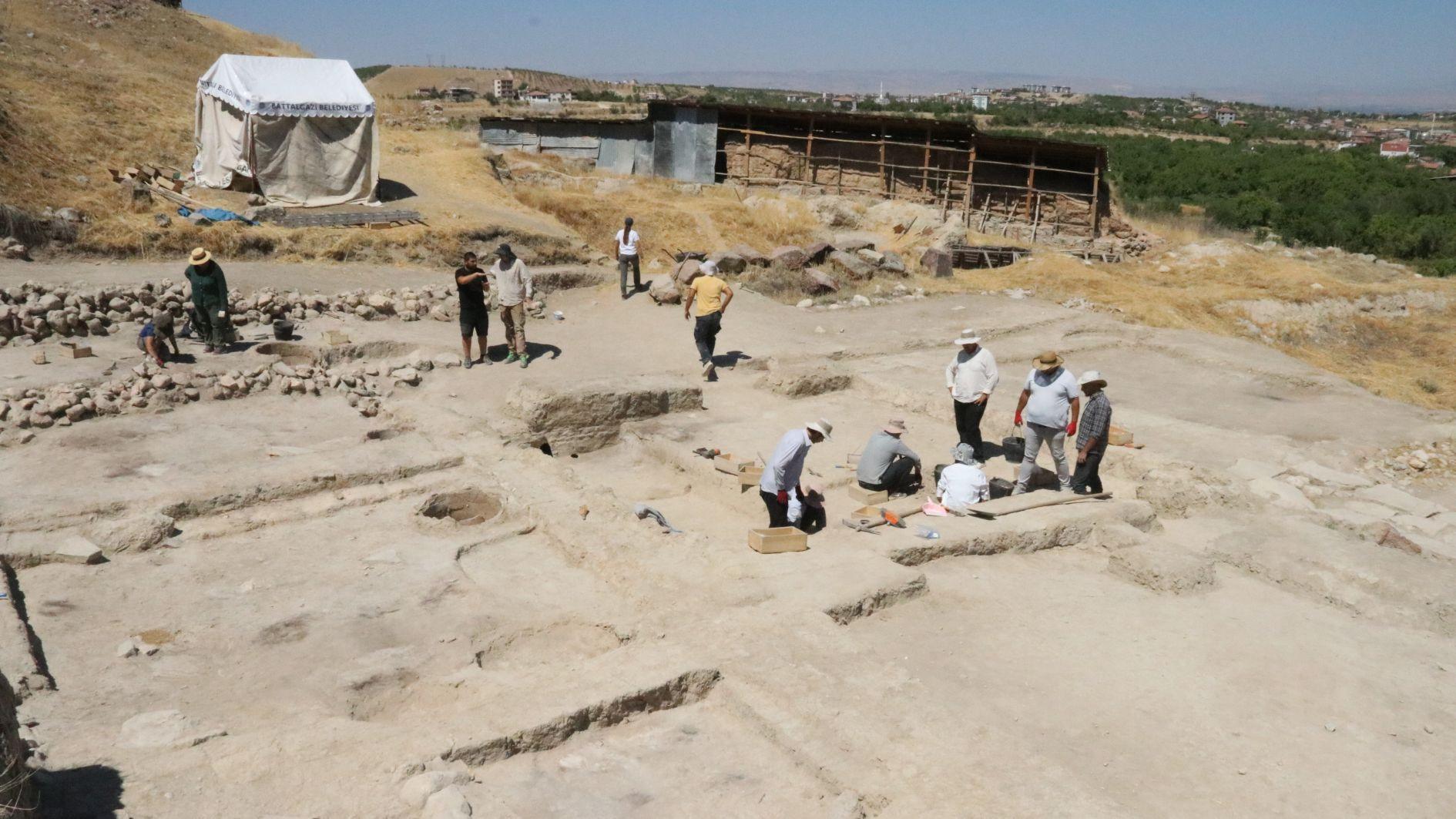
The fortification walls of the Late Hittite period at Arslantepe Mound, a site with a history of nearly 7,000 years and included on UNESCO’s World Heritage List, are being restored after suffering damage in the Feb. 6, 2023 earthquakes.
Francesca Balossi Restelli, the head of the Arslantepe Mound Excavation Team, told the state-run Anadolu Agency that this year’s excavations had begun about three weeks ago, with work being carried out in the north, west, and south sections of the mound.
She said that in the north, they were working on layers belonging to the Late Hittite period. “We are currently excavating a large public building dating back to around 1000 B.C. The walls are thick, made of mudbrick, and covered with white plaster, and they are very well preserved. We have dug more than a meter inside the room b
But still have not reached the base. The soil is very clean, with very few potsherds. This suggests that during the Late Hittite period they covered it with clean soil intentionally. It means something, but we don’t yet know exactly what. It was not the typical collapse of a normal building,” she said.
In the west, the team is working on layers from the Late Chalcolithic 2 period. “There, we are going down to the earliest layers of Arslantepe. We are finding houses — small two-room houses with courtyards, all built with mudbrick and plastered. There are many pottery findings in this area,” Restelli said.
She noted that excavations in the south were being conducted in Early Bronze Age layers. “We are finding houses and artifacts there. Recently, we discovered a hearth. There has been some destruction since the layers are close to the surface, but the materials and ceramics clearly point to around 1800 B.C.,” she explained.
‘It became a capital in the Late Hittite period’
Highlighting the significance of Arslantepe, Restelli continued: “In the Late Hittite period this place became a capital. The king of Melid resided here, and as in all Hittite cities, they built a wall to enclose the rulers and administrative structures. The gate of this wall faced north, directly overlooking the Euphrates, since the kingdom’s border lay in that direction. This shows that the gate directly faced the frontier.
We had already uncovered the red mudbrick fortification wall in previous excavations. It is the city wall from the Late Hittite period. That wall was slightly damaged in the Feb. 6, 2023 earthquakes, so we had to carry out restoration work. In the first year, we built a retaining wall with wood. Last year, we added stone foundations. This year, we are making a small restoration using new mudbricks crafted in the old style and technology.”